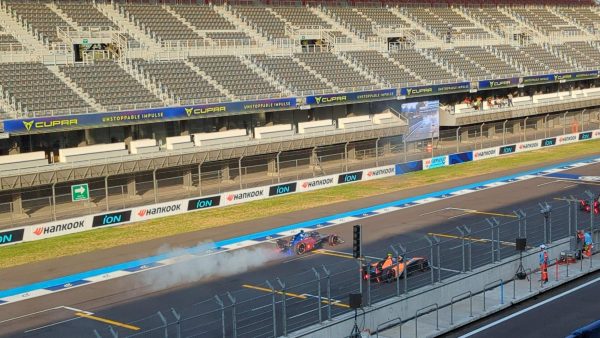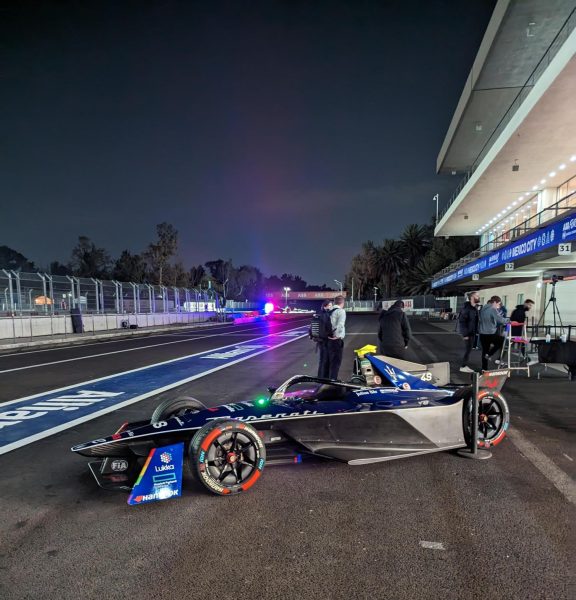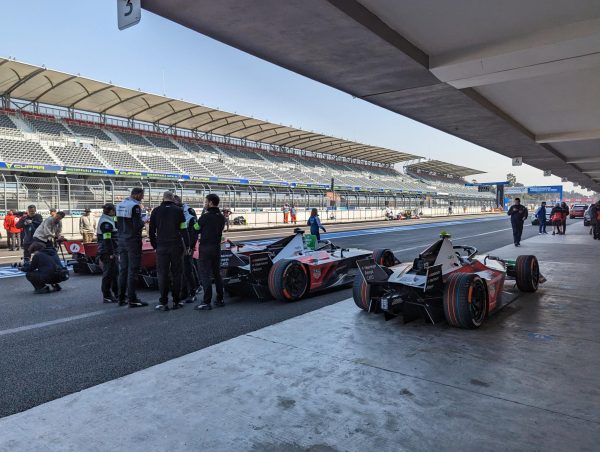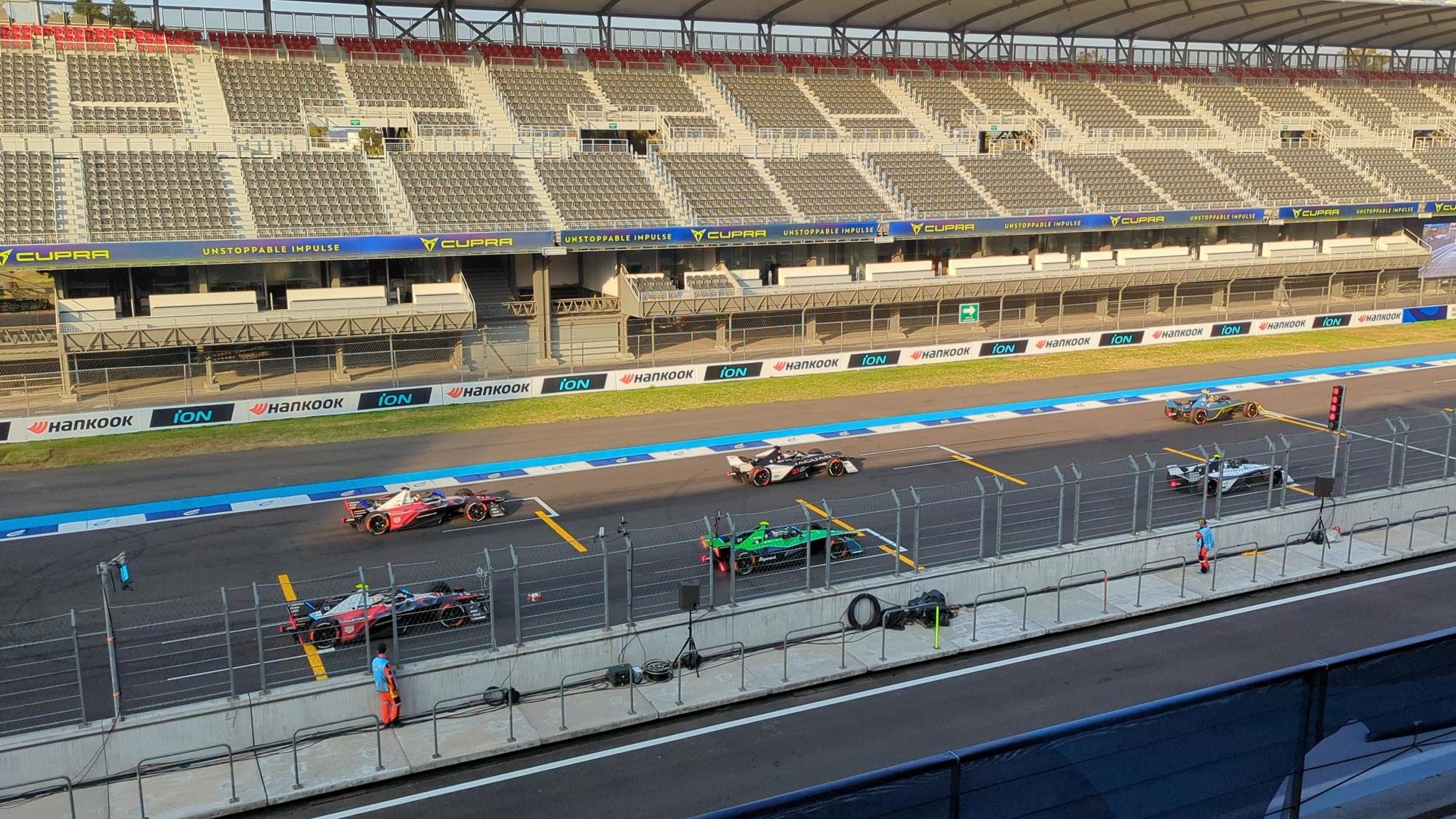One early-spring evening in March of 2011, at an Italian restaurant nestled in Paris, Jean Todt, the president of the Fédération Internationale de l’Automobile (FIA), presented his idea of an international single-seater all-electric championship to a group of French politicians, the Formula E history page recounts. Three years later, in Beijing, China, the first Formula E race marked the beginning of the world’s first certified net zero carbon sport (sport that produces zero carbon emissions). With the world and many Bishop’s students hooked on Formula One, it’s time to introduce F1’s cleaner half, Formula E (FE).
The “E” in Formula E highlights their efficient and electric racing.

(Alvin Chak)
“Part of the motivation of Formula E is sustainability,” Alvin Chak, Senior Engineer at MagCanica, a San Diegan-company that designs in-vehicle torque sensors used by teams in motorsport racing and in the U.S. Navy, articulated. He explains that FE does not just place emphasis on “greenhouse gas emission sustainability, but also cost sustainability.” FE’s motto, net zero since day zero, is the driving force for all they do. For that reason, all cars use the same chassis, tires, battery, and other car parts. Standardized parts leave room for less design and engineering creativity, overall leading to better cost efficiency. MagCanica, in particular, has sold their all-inclusive drive shaft torque sensors to every FE team on the grid since the start of the 2023 (GEN3) season.

FE, at a glance, is structured a lot like its very popular counterpart, Formula One (F1). Twenty-two drivers and eleven teams compete in 16 races across 11 global locations. But, unlike F1’s three-day weekend extravaganzas, FE condenses all activities into one day, consisting of two (thirty to forty-five minute) free practice sessions, qualifying (which determines the race line up), and the actual race. The FE point-scoring system is the same one used in all other FIA-sanctioned series. Each race is typically a hour with a predetermined number of laps, compared to F1’s unpredictable race times ranging from eighty to one-hundred minutes. Also unlike F1, Chak explained, FE has much less customization of car parts.
For example, MagCanica’s standardized torque sensors allow teams to measure torque, which is the twisting force that makes things rotate. Measuring the output and efficiency of torque is paramount with electric motors because teams need to track the energy efficiency of motors in order to continuously improve the car each season.

Engineers are “constantly working to improve the reliability and accuracy” of their product. Which is why as the supplier, Chak “gets access into the industry” and often resides in the pit lane, “talking to engineers and users of their product.” Again, the strive for efficiency in FE shows with the engineers’ role in the pit. Part installation is fast and easy as the majority of parts are standardized. In turn, Chak articulated, the primary focus of an engineer’s presence in the pit is to observe “usage, communicate with the team, gauge [the] mechanical environment, and diagnose issues regarding usage [of the sensor].”
From the efficiency of the race structure, to cost and energy efficiency — FE is designed to promote sustainable practices through electric racing vehicles. As an optimistic FE fan, Chak hypothesized that over the next “five to ten years,” FE “could surpass traditional motorsport.” Both in terms of popularity and technology. This seems likely as the “general shift to sustainability in [the] motorsport industry will affect car manufacturers, [and as] power capacity [increase] over the generations.”
As an engineer, Chak highlighted how FE “develop[s] under the harshest conditions and environments,” much like F1, but unlike F1, FE will place “electrification” at the “forefront” of the automotive industry. “Motorsport has a natural trickle-down” to the everyday cars used by civilians, and FE’s “limited noise, [location in regards] to metropolitan city centers, and [efficient-street] racetracks” are sure to increase FE’s fanbase through its accessibility and innovation.








![“I [look forward to] the adrenaline of just competing with your friends and playing a sport that I’ve loved for so many years,” Sydney Mafong (‘26) said. “It’s just unmatched.” The Softball team celebrates a victorious moment in the game against San Diego High School on March 15th during the Torrey Invitational, which Coach Joe “Joey” Moreno called the “first real test of the season” in a Locker Room email and won 10-3.](https://thebishopstower.com/wp-content/uploads/2025/04/Screenshot-2025-03-17-at-21.49.22-1200x1016.png)
